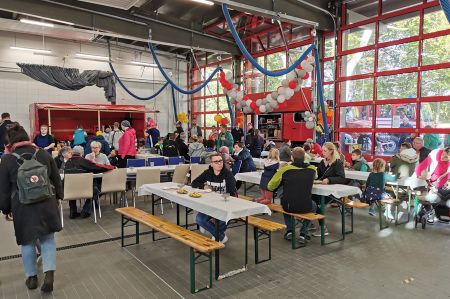Visiting the voluntary fire brigade in Bremen Farge
- Written by Portal Editor
Interesting was the visit of the volunteer fire brigade in Bremen Farge, which gave us a deep insight into the work at the weekend, especially the youth work.
What many people probably still don't know is that there were already organized fire-fighting units in ancient Egypt and later among the Romans, i.e. fire brigades have been part of our coexistence for thousands of years and have far greater significance than "just" firefighting.
Big Cities and Fighting Fires
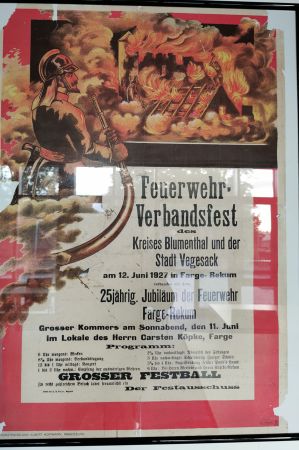 Cities with millions of inhabitants such as Rome, Constantinople or Ephesus developed especially in the Roman Empire. The houses were mostly multi-storey and were very close together, and the streets were very narrow. Wooden extensions and porches were often built on the houses. Quite a number of times, conflagrations destroyed entire districts of Rome, as well as other major cities. So in the year 21 B.C. a first fire brigade consisting of 600 slaves was founded in Rome.
Cities with millions of inhabitants such as Rome, Constantinople or Ephesus developed especially in the Roman Empire. The houses were mostly multi-storey and were very close together, and the streets were very narrow. Wooden extensions and porches were often built on the houses. Quite a number of times, conflagrations destroyed entire districts of Rome, as well as other major cities. So in the year 21 B.C. a first fire brigade consisting of 600 slaves was founded in Rome.
As early as the Middle Ages, communities were obliged to set up fire protection. Tower wardens and night watchmen were initially responsible for fire alarms, and in the event of a fire they called out: “Feurio! shouted from their observation posts. First, the guilds and guilds were obliged to intervene in an emergency. Since many buildings were half-timbered buildings made of wood and were often built within the city walls in a very small space, there were very often large fires in which entire districts burned down. Firemen were also anchored in the fire extinguishing ordinances for the first time, so that one can speak of the first professional fire brigades, such as the professional fire brigade in Vienna, which is assumed to have been founded in 1686.
Equipment of the fire brigade still insufficient
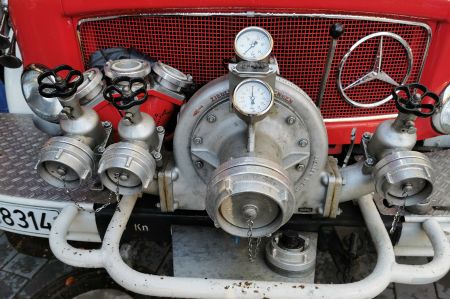 In the pre-industrial era, fire-fighting equipment was limited to simple tools such as buckets, ladders or tear-off hooks.
In the pre-industrial era, fire-fighting equipment was limited to simple tools such as buckets, ladders or tear-off hooks.
In the 17th century the hose was invented, first made of stitched leather; later the leather was riveted. Until the beginning of the 20th century, hand pumps, so-called fire hoses, which were pulled to the scene by horses or the fire brigade, were still used.
The first privately organized professional fire brigades were not founded in the USA until the middle of the 19th century. In some cases, only houses that bore the plaque of such a company were deleted.
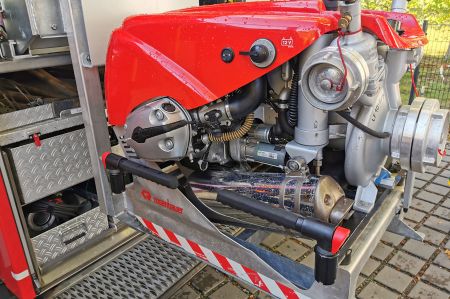 In the middle of the 19th century, the development of a comprehensive fire extinguishing system on a voluntary basis began in the German-speaking and beyond that in the entire Danube region. Several fire brigades claim the title of the oldest volunteer fire brigade in Germany.
In the middle of the 19th century, the development of a comprehensive fire extinguishing system on a voluntary basis began in the German-speaking and beyond that in the entire Danube region. Several fire brigades claim the title of the oldest volunteer fire brigade in Germany.
Apart from a few interruptions, such as the fire protection police during the National Socialist era, the voluntary fire brigade system has since provided the main part of ensuring defensive fire protection in Germany, alongside the compulsory, professional and factory fire brigade.
With the onset of industrialization at the beginning of the 20th century, the technology available to the fire brigades increased significantly. With vehicles powered by internal combustion engines, it was now possible to equip all fire brigades with powerful vehicles and fire pumps.
The volunteer fire brigade Bremen-Farge
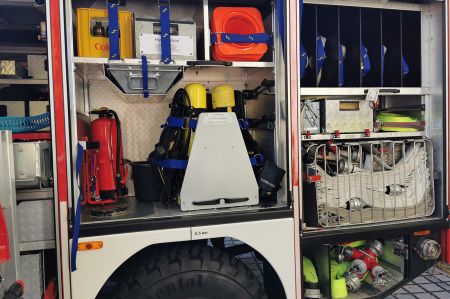 The active department of the Farge Volunteer Fire Department currently consists of 36 members. The alarm is given via a so-called radio alarm receiver, which is carried by every fire brigade member. Each member has personal protective equipment provided by the Municipality of Bremen.
The active department of the Farge Volunteer Fire Department currently consists of 36 members. The alarm is given via a so-called radio alarm receiver, which is carried by every fire brigade member. Each member has personal protective equipment provided by the Municipality of Bremen.
Organizationally, the FF Farge, like all other volunteer fire brigades in the municipality of Bremen, reports to the head of the Bremen fire brigade.
Together with the volunteer fire brigades Blumenthal and Vegesack, the FF Farge forms the 1st fire brigade readiness Bremen. All volunteer fire brigades on this side of the Lesum together with fire station 6 of the professional fire brigade form the north fire protection section.
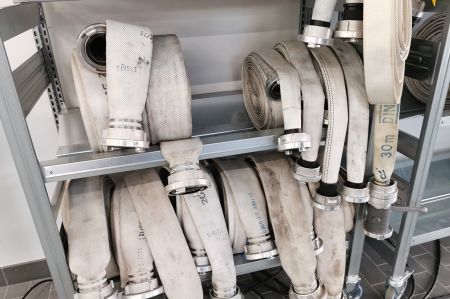 The equipment house built in 1938 at Farger Straße 134 was the domicile of the FF Farge until the completion of the new building that has now been officially opened. Since it was expanded in the 1980s, all of the fire service's vehicles have been stationed here.
The equipment house built in 1938 at Farger Straße 134 was the domicile of the FF Farge until the completion of the new building that has now been officially opened. Since it was expanded in the 1980s, all of the fire service's vehicles have been stationed here.
The operational area of the Farge volunteer fire brigade is surrounded by the Weser and the state border to Lower Saxony and borders on the streets Kreinsloger and Neuenkirchener Weg on the FF Bremen-Blumenthal. It therefore includes the districts of Rekum, Farge, Rönnebeck and parts of Lüssum. Around 13,300 people live here on around 1,300 hectares. In addition to residential buildings, some with a very high settlement density, commercial and industrial areas, forest areas and rural areas, as well as the Weser as a shipping route, can be found in this disengagement district. Residential buildings with up to 13 floors, all kinds of commercial establishments, factories, storage and handling facilities for liquids, farms, ships and boats can be found here.
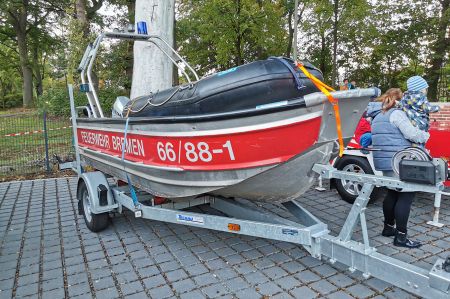 The deployment tasks of the Farge volunteer fire brigade can also be derived from the uses found in the deployment area.
The deployment tasks of the Farge volunteer fire brigade can also be derived from the uses found in the deployment area.
In addition to cellar, room, apartment and roof fires, forest and surface fires, fires and accidents in industrial and commercial companies (including those involving hazardous substances), water accidents and burning farms and animals in emergencies are to be expected.
Traffic accidents and the effects of natural disasters, such as storms or storm surges or heavy rainfall, must also be expected.
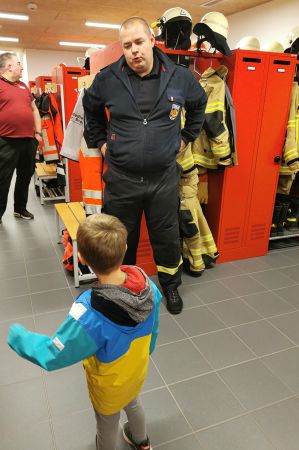 What struck us during the opening ceremony was the strong involvement of the local population and especially the youth, who are actively involved here from the age of 10.
What struck us during the opening ceremony was the strong involvement of the local population and especially the youth, who are actively involved here from the age of 10.
The way the volunteer firefighters treated the adolescents seemed to us to be extremely comradely and friendly, with no great order of rank or hierarchy, so it was a matter of course that the adolescents also had their own locker and their personal protective equipment.
And isn't it always better to spend your free time with the volunteer fire brigade than to play computer games that are often pointless in your own room?
Please read as well:
